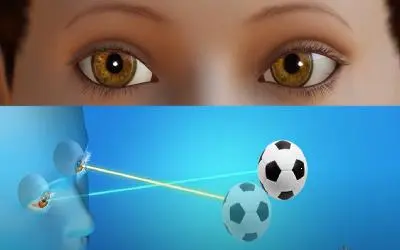Identifying visual issues in children can pose a challenge, especially when they don’t possess the necessary verbal abilities to communicate their challenges. Nevertheless, there are specific indicators to observe if you have concerns about potential visual difficulties your child may be facing. These indicators encompass:
1. Reading below their expected school grade level.
2. Reluctance or unwillingness to read or read out loud.
3. Excessive fidgeting during reading or other learning-related activities.
4. Difficulty summarizing or remembering what they have read.
5. Exhibiting signs of frustration.
6. Resisting going to school or doing homework.
7. Having a low attention span.
8. Taking frequent bathroom breaks during reading-related activities.
9. Covering one eye, tilting their head, or blinking frequently when looking at distant objects like a blackboard.
By recognizing these cues, you can more effectively detect possible visual dysfunction in your child and take the necessary steps to seek appropriate assistance or professional assessment as required.



